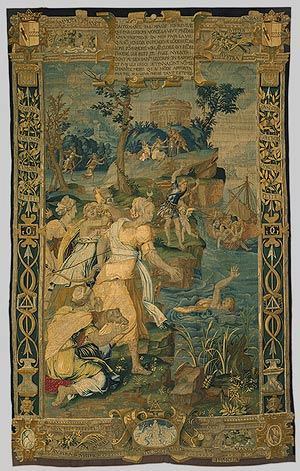 大地生成をつかさどるクレータ島の女神。ソーリーヌスによれば、「甘美な乙女」の意という。
大地生成をつかさどるクレータ島の女神。ソーリーヌスによれば、「甘美な乙女」の意という。ディクテュンナDivktunnaと同一霊格。
アイギーナAigina島ではアパイアー(=Afaiva)の名のもとに崇拝された。
アルテミスに包摂された。
「いとしき乙女」の意味。青銅器時代のクレータ島やエーゲ海諸島の太女神であったレアーの添え名[1]。昔のガリアの支配者にも同じ名前がつけられた。その支配者は、おそらく、太女神の精神を体現した女王であったと恩われる[2]。オリュムポスの神々の神話によると、ブリトマルティスの母親はクレータ島の乙女カルメーであった。カルメーCarmeは別称をCar、 Car-Dia、 Carmenta、 Carnaなどと言った。このように名称は異なっていても、実際は、同ーの女神であったのである。祈祷や賛歌でこの女神はそうしたさまざまな添え名で呼ばれたために、のちには、異なった女神の名称、であると誤解されるようになった。そのためにカルメーは西欧では複数の女神たちとなり、東洋では千の名前を持つ女神となった。
Barbara G. Walker : The Woman's Encyclopedia of Myths and Secrets (Harper & Row, 1983)
 大地生成をつかさどるクレータ島の女神。ソーリーヌスによれば、「甘美な乙女」の意という。
大地生成をつかさどるクレータ島の女神。ソーリーヌスによれば、「甘美な乙女」の意という。
ディクテュンナDivktunnaと同一霊格。
アイギーナAigina島ではアパイアー(=Afaiva)の名のもとに崇拝された。
アルテミスに包摂された。
Britomartis, pursued by Minos, who wished to take her by force in the woods, greatly preferred to end her life in the sea rather than submit to his outrageous will. Accordingly, wishing to give her fame for her death, Phoebe [Diana] invested fishnets and snares, with which the body was brought to a holy place, and since then the Greeks have called her Dictynna ["fishnet"]. O holy death, that gave such a valuable thing to the world by means of such a misfortune!Diana stands in the center of the tapestry, a crescent on a support above her forehead. To the right, the drowning Britomartis raises one hand above the water. In the middle distance, Minos, king of Crete, stands looking into the water with his arms raised in astonishment, while Britomartis' body is being fished out of the water to the right. In the left background we see Minos pursuing Britomartis, and farther back, to the right, Diana hands a net to two men.